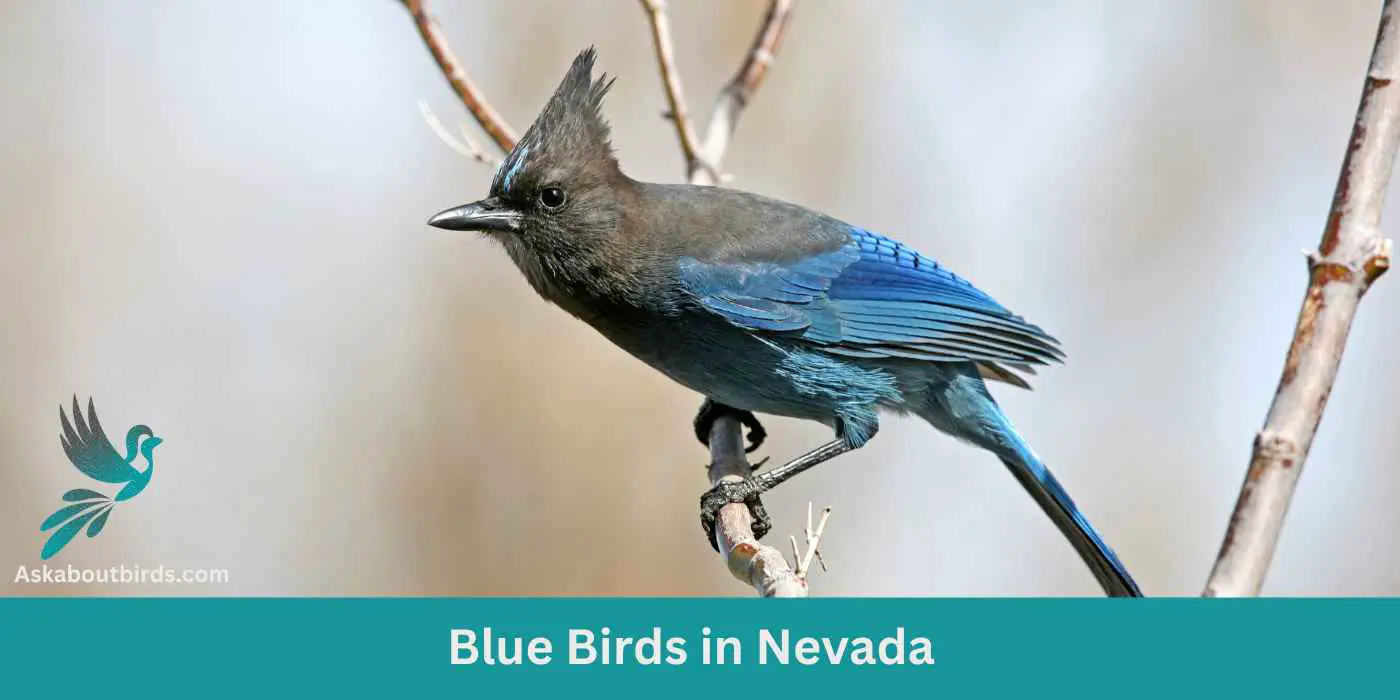Nevada, a state known for its vast and varied landscape, is not just a haven for thrill-seekers and nature enthusiasts, but also a paradise for birdwatchers. The state hosts an array of beautiful bird species, 12 of which exhibit enchanting shades of blue. Our comprehensive photo guide will not only introduce you to these spectacular blue birds found in Nevada but will also provide you with detailed information on where and how to spot them.
Grab your binoculars, and let’s embark on a journey to explore the magical world of blue birds in Nevada!
Blue Birds Found In Nevada
The diverse geography of Nevada, from the dry deserts to the high mountain ranges, creates a variety of habitats that support a wide range of bird species. The presence of numerous rivers, lakes, and wetlands amidst these arid regions provides essential water sources and resting spots for birds, making it a crucial habitat for both resident and migratory species.
The state’s geographic location places it along the Pacific Flyway, a major north-south migratory route for birds in the Americas, contributing to the diversity of bird species observed in the region.
Mountain Bluebird
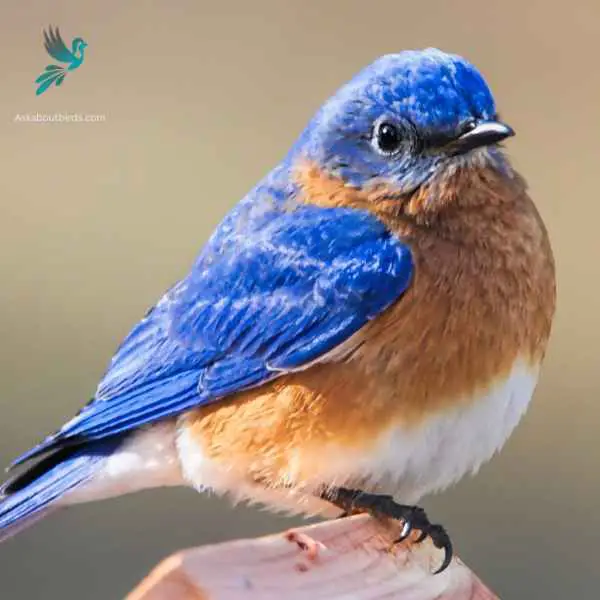
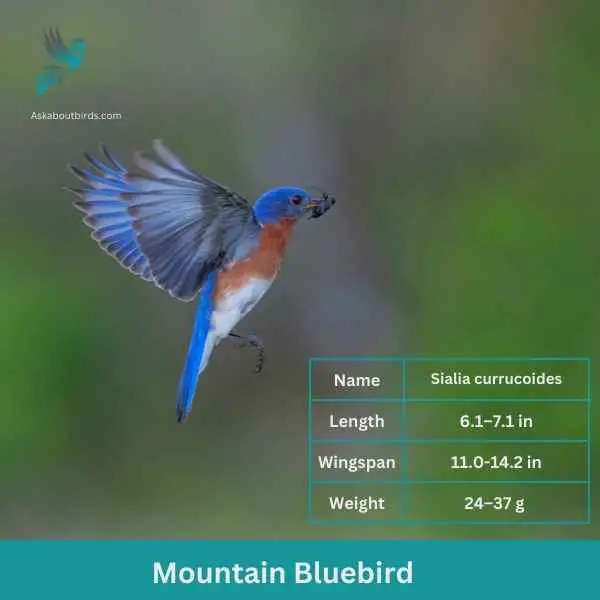
| Feature | Measurement |
|---|---|
| Scientific Name | Sialia currucoides |
| Length | 6.1–7.1 in |
| Wingspan | 11.0-14.2 in |
| Weight | 24–37 g |
The Mountain Bluebird is a small bird found in open grasslands and rocky mountains of North America. It is known for its stunning blue plumage, which is particularly vibrant in males. Females, on the other hand, have a more subdued blue coloration with hints of gray. These birds have slender bodies and a slightly curved bill, adapted for catching insects on the wing.
Mountain Bluebirds are insectivores, feeding primarily on insects such as beetles, grasshoppers, and spiders. They are skilled aerial hunters, capable of capturing their prey in mid-flight. During breeding season, these birds build their nests in tree cavities or man-made nest boxes, where females lay a clutch of eggs. The male bluebird actively participates in nest-building and provides food for the female during incubation.
Western Bluebird
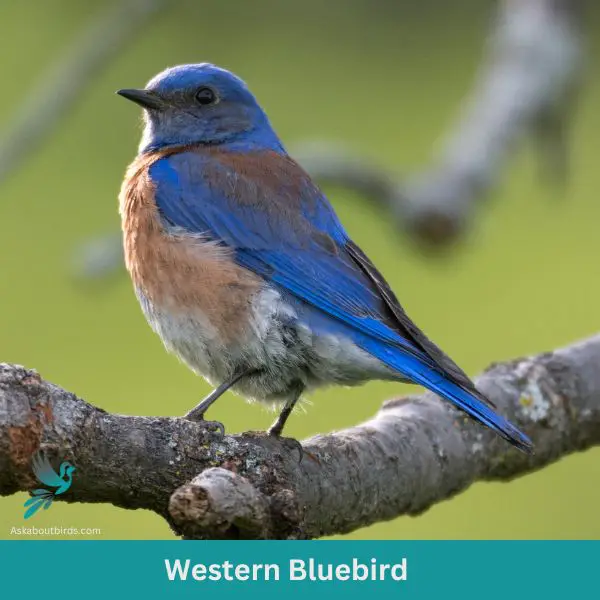
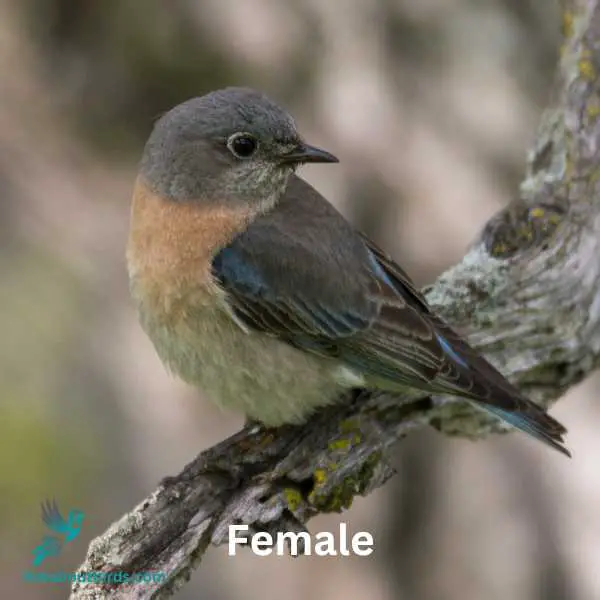
| Trait | Western Bluebird |
|---|---|
| Scientific Name | Sialia mexicana |
| Length | 5.5-7 inches |
| Wingspan | 11-13 inches |
| Weight | 0.8-1.1 ounces |
The Western Bluebird is a charismatic bird, appreciated for its vivid coloring and melodious song, commonly observed in open woodlands and meadows of the West.
Appearance: The male Western Bluebird sports a dark blue head, throat, wings, and tail with an orange breast and sides, transitioning into a grayish belly. Females are more muted, displaying grayish-blue wings and tail with a more subdued orange wash on the chest.
Diet: Western Bluebirds predominantly feed on insects, complemented by berries and fruits when available. They hunt by perching and then diving to the ground to capture their prey, and they’re also known to catch insects in mid-air.
Reproduction: These birds often utilize natural tree cavities or nest boxes for breeding. The female builds a loose nest inside and lays a clutch of 4-6 pale blue eggs.
Steller’s Jay
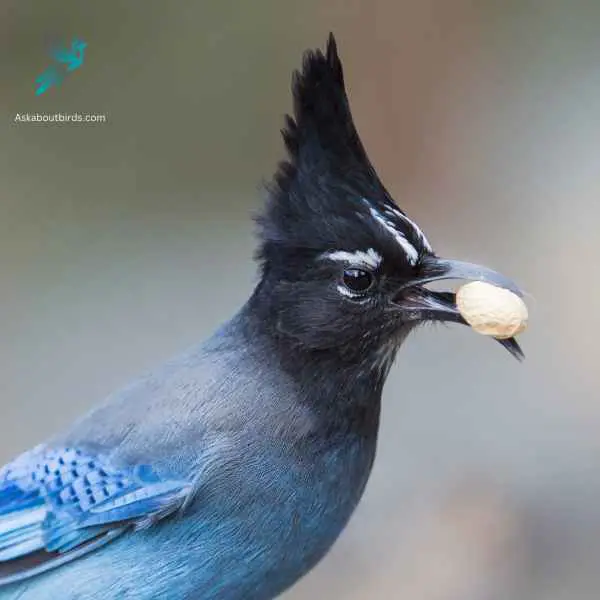

| Feature | Measurement |
|---|---|
| Scientific Name | Cyanocitta stelleri |
| Length | 12–13 in |
| Wingspan | 45 to 48 cm |
| Weight | 45 to 48 cm |
The Steller’s Jay is a charismatic and easily recognizable bird found mainly in the coniferous forests of the western North America, known for its bold behavior and loud, varied calls.
Appearance: The Steller’s Jay has a striking color contrast with a deep blue body and wings and a blackish head and upper body. One of its most distinguishing features is the tall, dark crest on its head, which can be raised or lowered depending on the bird’s mood. Its eyes are dark and its beak is strong and black.
Diet: The Steller’s Jay is omnivorous. It feeds on a wide range of items, from seeds, nuts, and berries to insects and small animals. It’s also known to raid campsites and picnics, often scavenging for human food.
Reproduction: Steller’s Jays form monogamous pairs that often remain together for several years. They typically build their nests in coniferous trees, made from twigs, moss, and other plant materials. The female lays a clutch of 2 to 6 eggs, which are usually pale green or blue with brown spots.
Cliff Swallow
Scientific Name: Petrochelidon pyrrhonota
Length: 5-6 in (13-15 cm)
Wingspan: 11-12 in (28-30 cm)
Weight: 0.7-1 oz (20-28 g)
The Cliff Swallow is a small, agile bird known for its characteristic mud nests, social behavior, and long-distance migrations.
Appearance: Cliff Swallows have a distinctive appearance with a dark blue back, a cream-colored forehead, an orange-brown rump, and a buffy or whitish underbelly. They also have a square or slightly notched tail.
Diet: The diet of Cliff Swallows primarily consists of flying insects, including flies, beetles, and wasps, which they catch in the air while flying.
Reproduction: Cliff Swallows are known for building gourd-shaped mud nests, often in colonies on vertical cliff faces, bridges, or buildings. The female typically lays a clutch of 3 to 6 white eggs. Both parents participate in incubating the eggs and feeding the chicks.
Pinyon Jay

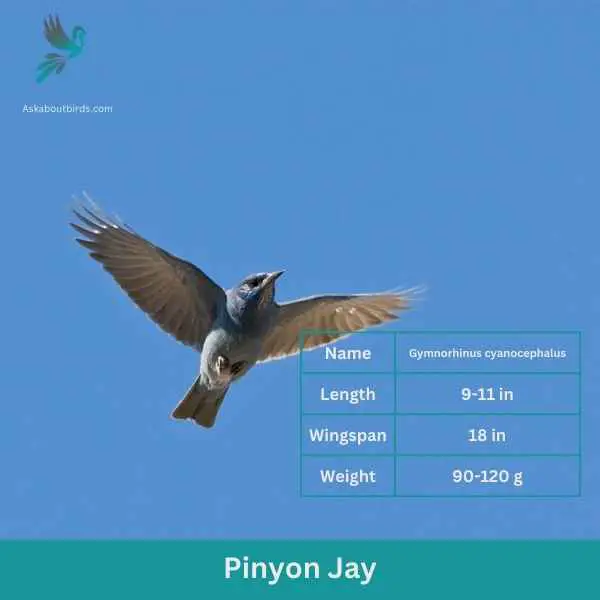
| Feature | Measurement |
|---|---|
| Scientific Name | Gymnorhinus cyanocephalus |
| Length | 9-11 in |
| Wingspan | 18 in |
| Weight | 90-120 g |
The Pinyon Jay is a small, stout bird found in the western United States and Mexico. It has a distinctive blue-gray coloration with a black head and neck. The bird is well adapted to living in dry, arid habitats with sparse vegetation and can often be found in pinyon pine and juniper forests. The Pinyon Jay is known for its communal behavior, living in groups of up to several hundred birds during the non-breeding season. During breeding season, they form monogamous pairs and build nests in juniper trees.
The Pinyon Jay’s diet consists mainly of pinyon pine seeds, but they also eat insects, berries, and other seeds. They have a unique way of storing food for later, using their expandable throat pouch to carry up to 50 seeds at once. The Pinyon Jay is an important seed disperser for pinyon pine and juniper trees, and is a vital part of the ecosystem in its range. However, habitat loss and fragmentation due to human activities, such as logging and oil and gas development, have led to declines in Pinyon Jay populations in recent years.
Woodhouse’s Scrub-Jay
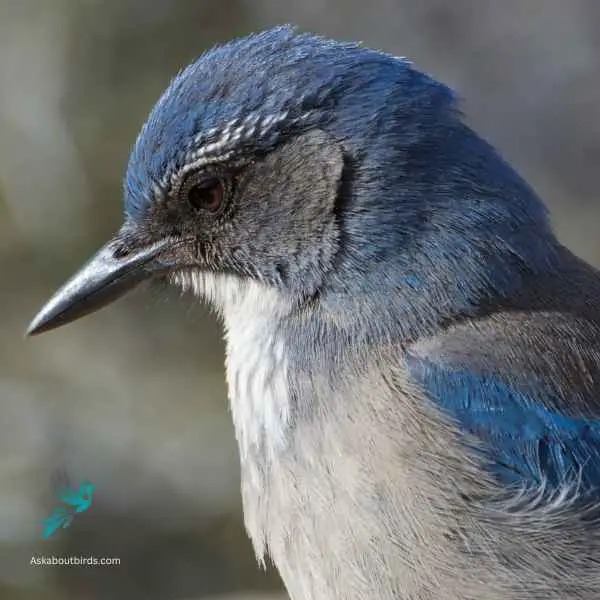

| Feature | Measurement |
|---|---|
| Scientific Name | Aphelocoma woodhouseii |
| Length | 11–12 in |
| Wingspan | 15 in |
| Weight | 80 g |
Woodhouse’s Scrub-Jay is a medium-sized bird that is found in the western part of North America. It has a blue-gray head, wings, and tail, with a brownish-gray back and a white belly. The bird’s bill is black and its eyes are dark. Woodhouse’s Scrub-Jay is known for its loud and harsh calls, which it uses to communicate with other birds in its flock.
This bird is commonly found in arid and semi-arid habitats, such as deserts, scrublands, and oak woodlands. It is an omnivore, feeding on a variety of insects, seeds, fruits, and small animals. Woodhouse’s Scrub-Jay is known for its intelligence and ability to cache food for later use. It is also a territorial bird, defending its territory from other birds and animals. Despite being a common bird, Woodhouse’s Scrub-Jay is threatened by habitat loss and fragmentation, making conservation efforts important for its survival.
Brown-Headed Cowbird

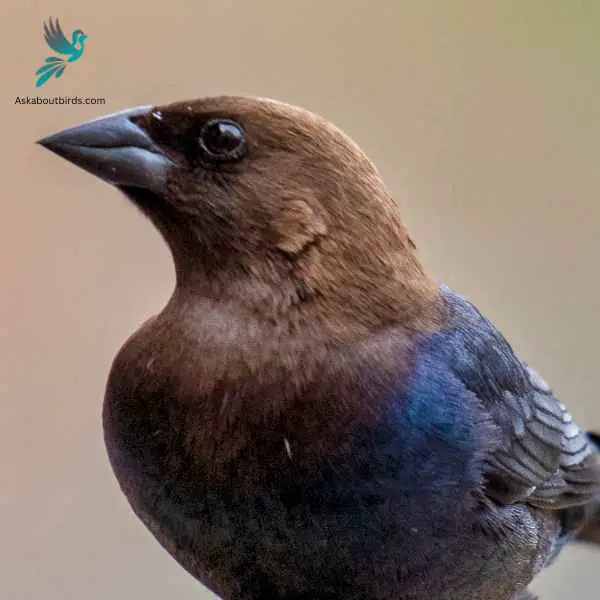
| Feature | Measurement |
|---|---|
| Scientific Name | Molothrus ater |
| Length | 6.3–8.7 in |
| Wingspan | 14 in |
| Weight | 30–60 g |
The Brown-Headed Cowbird is a unique North American bird known for its brood parasitism behavior. Rather than building its own nests, it lays its eggs in the nests of other bird species.
Appearance: Male Brown-Headed Cowbirds are glossy black with a distinct brown head, while females are plain gray-brown without the brown head. Both have a stout shape with a finch-like bill and a short tail.
Diet: Brown-Headed Cowbirds primarily feed on seeds, including grasses and grains. They also consume insects, especially during the breeding season. These birds often forage on the ground, commonly seen in open habitats like fields or pastures.
Reproduction: Unique among North American birds, the Brown-Headed Cowbird is a brood parasite. Instead of building its own nest, the female lays her eggs in the nests of other bird species. The unwitting host then raises the cowbird chick, often at the expense of its own offspring. The female can lay up to 40 eggs in a single breeding season, spread across multiple host nests.
Black-Billed Magpie

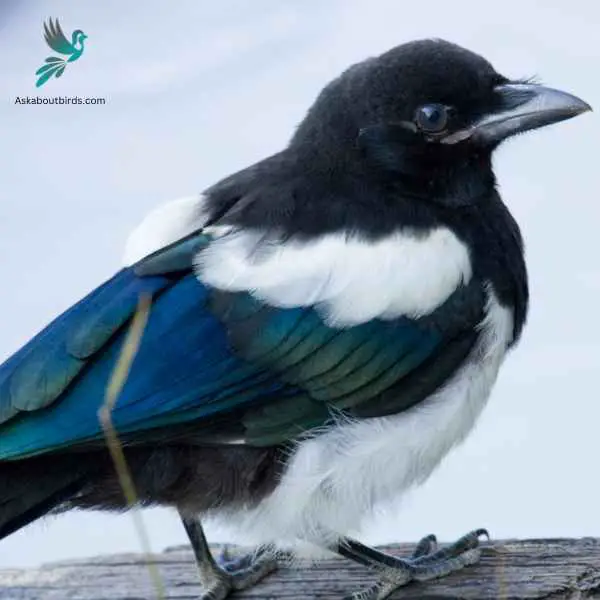
| Feature | Measurement |
|---|---|
| Scientific Name | Pica hudsonia |
| Length | 13.4-15.4 in |
| Wingspan | 27.5-35.4 in |
| Weight | 220-270 g |
The Black-Billed Magpie is a striking bird native to the western half of North America, recognized for its bold black and white plumage and long tail. Its vocalizations are varied, including harsh chatters and melodious notes, and it’s known to be both curious and intelligent.
Appearance: The Black-Billed Magpie has a unique appearance with its glossy black head, chest, and tail contrasting sharply against its white belly and shoulder patches. Its long tail, which is iridescent greenish-blue, is one of its most distinguishing features. The wings also display a hint of iridescent blue-green.
Diet: Black-Billed Magpies are omnivorous and have a diverse diet. They primarily eat insects, especially in summer, but will also consume small mammals, berries, seeds, and carrion. They are often seen scavenging roadkill and are known to store food in the ground for later consumption.
Reproduction: Black-Billed Magpies mate monogamously and usually build large, domed nests in trees or large shrubs. These nests are made from twigs and mud and can be quite elaborate. The female lays a clutch of about 6 to 9 eggs, which are greenish or bluish and speckled with brown.
Yellow-billed Magpie
Scientific Name: Pica nuttalli Length: 17-19 in (43-48 cm) Wingspan: 24-26 in (61-66 cm) Weight: 5-6.5 oz (142-184 g)
The Yellow-billed Magpie is a distinctive bird native to California, known for its bold coloration and gregarious nature.
Appearance: The Yellow-billed Magpie has striking black and white plumage. The head, chest, back, and tail are glossy black, with white patches on the wings and belly. The eyes are dark, and the bill and legs are bright yellow, which makes it easily distinguishable from the Black-billed Magpie. Both sexes have similar coloration, but males are slightly larger.
Diet: The Yellow-billed Magpie is omnivorous and feeds on a wide variety of food, including insects, small mammals, fruits, and seeds. It also scavenges for food and will eat carrion and human food scraps.
Reproduction: The Yellow-billed Magpie usually builds its nest in a tree or large shrub. The nest is a large, dome-shaped structure made of sticks and lined with softer materials like leaves and grass. The female lays a clutch of 5 to 7 eggs and does most of the incubating. Both parents participate in feeding the chicks once they hatch.
California Scrub-Jay

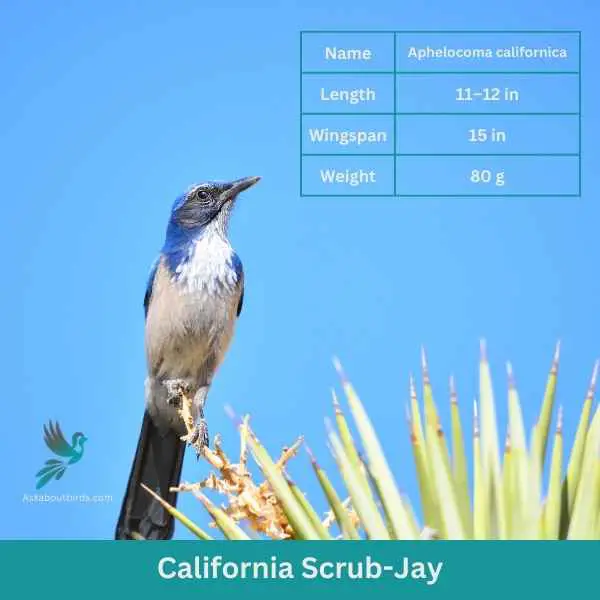
| Feature | Measurement |
|---|---|
| Scientific Name | Aphelocoma californica |
| Length | 11–12 in |
| Wingspan | 15 in |
| Weight | 80 g |
The California Scrub-Jay is a vivacious bird known for its intelligence and striking appearance, predominantly found in the chaparral, oak woodlands, and residential areas of California and parts of the Pacific Northwest.
Appearance: This jay boasts a vivid blue head, wings, and tail, complemented by a pronounced white eyebrow, a white underbelly, and a soft gray back. A distinguishing feature is the blue necklace or band across its throat and chest, which differentiates it from some other jay species.
Diet: California Scrub-Jays are omnivorous. Their diet consists of insects, fruits, seeds, and nuts, with acorns being a particular favorite. They, like their Floridian counterparts, will also cache acorns and other foods in the ground to consume later.
Reproduction: The California Scrub-Jay forms monogamous pairs. The nests, usually built between 1 to 3 meters off the ground in trees or shrubs, are constructed using twigs and lined with finer materials like hair or plant fibers. The female lays a clutch of 3 to 6 eggs that are greenish or bluish and speckled with brown.
Where to Spot Nevada’s Blue Birds
Nevada is a hidden gem for birdwatchers, with its diverse landscapes offering a home to a wide array of bird species. Here are some of the best locations in the state to observe a rich diversity of birds, including the mesmerizing blue birds:
- Red Rock Canyon National Conservation Area: Located just outside of Las Vegas, this area boasts more than 200 species of birds, including the Mountain Bluebird and Western Bluebird. The varied habitats of canyons, mountains, and desert plains make it a must-visit spot for birdwatchers.
- Stillwater National Wildlife Refuge: Situated in the Lahontan Valley, this refuge is a critical stopover point for migratory birds on the Pacific Flyway. Its extensive wetlands attract a variety of waterfowl and shorebirds, including the Blue-winged Teal.
- Ash Meadows National Wildlife Refuge: This refuge is home to nearly 30 species of birds found nowhere else in the world. The spring-fed wetlands and alkaline desert habitats provide an excellent environment for spotting the Western Bluebird and other unique bird species.
- Ruby Mountains: The diverse habitats of the Ruby Mountains, ranging from sagebrush foothills to alpine tundra, attract a variety of bird species. The Mountain Bluebird, Nevada’s state bird, can often be spotted here.
- Lake Tahoe: The pristine freshwater lake surrounded by forests provides a picturesque setting for birdwatching. You can spot the Mountain Bluebird along with many other bird species in the surrounding areas.
| Neighboring State’s Blue Birds | Best Spots for Blue Birds |
|---|---|
| California’s Blue Birds | 1. Point Reyes National Seashore 2. Yosemite National Park 3. Big Sur |
| Oregon’s Blue Birds | 1. Malheur National Wildlife Refuge 2. Mount Hood National Forest 3. Cascade-Siskiyou National Monument |
| Idaho’s Blue Birds | 1. Coeur d’Alene National Forest 2. Sawtooth National Recreation Area 3. Boise National Forest |
| Utah’s Blue Birds | 1. Bear River Migratory Bird Refuge 2. Zion National Park 3. Fishlake National Forest |
| Arizona’s Blue Birds | 1. Coconino National Forest 2. Saguaro National Park 3. Chiricahua National Monument |
FAQs on Blue Bird Species Found in Nevada
What do Mountain Bluebirds eat?
Mountain Bluebirds primarily feed on many harmful insects, making them a natural form of pest control. Their diet consists of a variety of insects including beetles, grasshoppers, and caterpillars. However, during winter months, when insects are less available, they also eat small fruits seeds, sunflower seeds, and berries, such as mistletoe seeds and juniper berries. Interestingly, they often forage from perches, swooping down to catch insects on the ground, and then returning to their perch to consume their catch.
What is the state bird of Nevada?
The official Nevada state bird is the Mountain Bluebird, a member of the thrush family. It was designated as the state bird in 1967. This bird is known for its brilliant blue and, azure blue feathers, which are particularly vibrant in males. The Mountain Bluebird lives and is typically found in the Nevada high country year-round high country and other mountainous regions of the western United States year-round. The state and federal governments designated these tiny birds with protected status.
What are the differences between Eastern Bluebird and other Bluebird species?
Eastern Bluebirds are one of three bluebird species found in North America, the others being the Mountain Bluebird (Sialia currucoides) and the Western Bluebird (Sialia mexicana). Eastern Bluebirds have a bright blue plumage on their upper parts, a white underparts, and an orange chest and white throat below. In contrast, Mountain Bluebirds have a light blue or azure blue plumage overall, with females having a gray belly, while Western Bluebirds have a blue head, wings, and tail, with a reddish-orange chest and grayish belly.
What are common nesting sites for cavity nesters?
Cavity nesters are birds that nest in natural or artificial cavities or holes. Common nesting sites for cavity-nesting birds include holes in dead trees or snags, woodpecker holes, and nesting boxes or birdhouses. Some birds’ nesting cavity, like house wrens and European starlings, might also use cavities in buildings or other structures. Providing birdhouses or nesting boxes with appropriate hole sizes can attract cavity nesters like bluebirds, house wrens, and chickadees to your yard.

